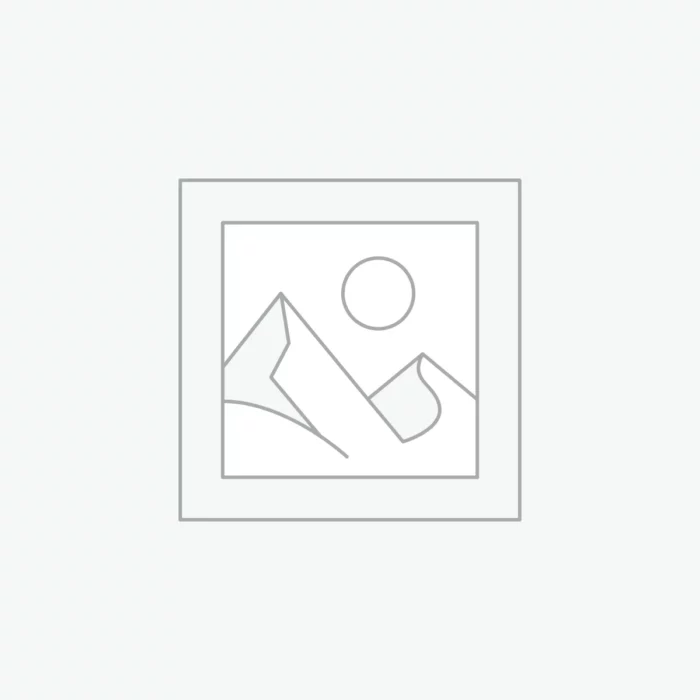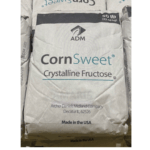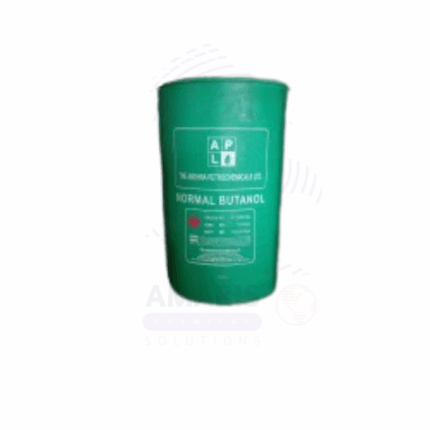Back to products


Fully Refined Paraffin Wax
$ 3.00 Original price was: $ 3.00.$ 2.86Current price is: $ 2.86.
Fuel Conditioner
Whatsapp Order
Fuel Conditioner is a specialized chemical additive formulated to improve the performance, efficiency, and longevity of fuels such as gasoline, diesel, biodiesel, and kerosene. It typically contains detergents, corrosion inhibitors, stabilizers, lubricity enhancers, and combustion improvers. The product is designed to clean fuel injectors and carburetors, reduce engine deposits, prevent fuel oxidation, and enhance combustion efficiency. Fuel Conditioners help optimize fuel properties to reduce emissions, improve fuel economy, and protect fuel system components in vehicles, generators, and industrial machinery.
Description
Table of Contents
Toggle
Fuel Conditioner
Primary Uses
- Automotive and Transportation Industry
- Cleans fuel injectors, carburetors, and intake valves to restore engine performance and smooth idling.
- Reduces carbon deposits and varnish build-up in fuel systems, enhancing combustion efficiency and reducing emissions.
- Improves fuel stability by preventing oxidation and formation of gums and sediments during storage.
- Acts as a corrosion inhibitor to protect fuel tanks, lines, and engine components from rust and wear.
- Enhances lubricity in low-sulfur fuels, protecting fuel pumps and injectors from premature wear.
- Used in gasoline and diesel vehicles to improve throttle response and reduce knocking or pinging.
- Industrial and Marine Applications
- Maintains fuel quality in diesel generators, heavy machinery, and marine engines for reliable operation.
- Extends fuel storage life in backup power systems by preventing degradation and microbial contamination.
- Improves combustion in marine diesel engines, reducing smoke and harmful exhaust emissions.
- Agriculture and Construction Equipment
- Used in tractors, harvesters, and construction equipment to optimize fuel consumption and reduce downtime caused by fuel system issues.
- Prevents microbial growth and fuel contamination in stored fuels on remote sites.
Secondary Uses
- Aviation
- Some formulations are compatible with aviation fuels, improving cold flow properties and preventing icing in fuel lines.
- Home Heating Systems
- Applied in heating oil to improve combustion efficiency and prevent nozzle clogging in furnaces and boilers.
- Fuel Blending and Additive Manufacturing
- Used as a base or component in custom fuel additive blends to tailor performance for specific engines or environments.
KEY PRODUCT FEATURES
1. Basic Identification Attributes
- Chemical Name: Varies by formulation; typically a blend of detergents, corrosion inhibitors, and stabilizers
- Common/Trade Name: Fuel Conditioner, Fuel Additive, Fuel System Cleaner
- CAS Number: Mixture – varies by active ingredients
- HS Code: 3811.90 (Additives for mineral oils)
- Molecular Formula: Mixture
2. Physical & Chemical Properties
- Physical State: Clear to slightly colored liquid
- Color & Odor: Pale amber to clear; mild characteristic odor
- Density: Typically 0.85–0.95 g/cm³
- Solubility: Miscible with hydrocarbon fuels
- Stability: Stable under recommended storage conditions; sensitive to extreme heat and moisture
3. Safety & Hazard Attributes
- Hazard Class (GHS): Varies by formulation; often flammable liquid (Category 3), irritant
- Toxicity: Moderate; harmful if swallowed; may cause skin and eye irritation
- Exposure Limits: Follow MSDS guidelines for specific product
4. Storage & Handling Attributes
- Storage Conditions: Store in a cool, dry, well-ventilated area away from ignition sources and incompatible substances
- Container Type: Metal or high-density polyethylene containers, tightly sealed
- Shelf Life: Typically 12–36 months depending on formulation and storage
- Handling Precautions: Use personal protective equipment; avoid inhalation, ingestion, and skin contact
5. Regulatory & Compliance Attributes
- Compliant with relevant fuel additive regulations such as EPA, REACH, and local standards
- Usage and concentration limits regulated based on fuel type and jurisdiction
6. Environmental & Health Impact
- Biodegradability: Varies; many formulations designed to be biodegradable or less environmentally persistent
- Ecotoxicity: Potentially harmful to aquatic life; avoid release into environment
- Bioaccumulation: Low to moderate potential depending on formulation
- Carcinogenicity/Mutagenicity: Not classified as carcinogenic; safety depends on formulation
SAFETY HANDLING PRECAUTIONS
Safety Handling Precautions
- PPE Required: Chemical-resistant gloves, safety goggles, protective clothing, and adequate ventilation
- Handling Guidelines: Avoid inhalation of vapors and skin contact; prevent spills and environmental release
- Storage Measures: Keep away from heat, sparks, and open flames; store in tightly closed containers
- Hygiene Practices: Wash thoroughly after handling; avoid eating or smoking in work areas
First Aid Measures
- Inhalation: Move to fresh air; seek medical attention if breathing difficulty occurs
- Skin Contact: Wash skin with soap and water; seek medical advice if irritation develops
- Eye Contact: Rinse immediately with water for at least 15 minutes; get medical help if irritation persists
- Ingestion: Do not induce vomiting; rinse mouth and seek immediate medical attention
Firefighting Measures
- Fire Hazards: Flammable liquid; vapors may form explosive mixtures with air
- Extinguishing Media: Use foam, dry chemical powder, carbon dioxide (CO₂), or water spray
- Special Precautions: Firefighters should wear self-contained breathing apparatus and protective clothing
- Decomposition Products: Carbon oxides, hydrocarbons, and potentially toxic fumes
Related products
Butanol
Butanol (also known as n-Butanol or Normal Butanol) is a clear, colorless liquid with a mild, alcoholic odor. It is a four-carbon primary alcohol with the chemical formula C4H10O. Butanol is moderately soluble in water and miscible with many organic solvents. Its physical and chemical properties make it a versatile solvent and chemical intermediate. Butanol indicates a high purity grade often used in industrial, pharmaceutical, and chemical synthesis applications.
Mono Ethylene Glycol
Mono Ethylene Glycol (MEG) is a colorless, odorless, viscous liquid with a sweet taste. It is a widely used organic compound belonging to the glycol family. MEG is primarily utilized as an antifreeze agent and a raw material in the production of polyester fibers and resins. Its excellent solvent properties, low volatility, and high boiling point make it valuable across various industrial applications.
Phosphoric acid Technical Grade
Phosphoric Acid Technical Grade is a concentrated, inorganic acid primarily used in industrial applications. It typically contains minor impurities compared to food or pharmaceutical grades but maintains excellent performance as an acidulant, rust remover, and intermediate chemical. This grade is widely used in manufacturing fertilizers, detergents, metal treatment, and other industrial processes where high purity is not critical but effective acidic properties are required.
Sodium Formate Industrial Grade
Sodium Formate Industrial Grade is a white crystalline powder or granules used primarily in industrial applications requiring a buffering agent, de-icing agent, or chemical intermediate. It offers high purity suitable for various manufacturing processes but does not meet food-grade standards. This grade is widely applied in leather tanning, textile dyeing, concrete additives, and as a corrosion inhibitor in oil and gas industries.


 Preservatives(food)
Preservatives(food) Flavor Enhancers
Flavor Enhancers Acidulants
Acidulants Sweeteners
Sweeteners Antioxidants
Antioxidants Colorants(food)
Colorants(food) Nutraceutical Ingredients (food)
Nutraceutical Ingredients (food) Nutrient Supplements
Nutrient Supplements Emulsifiers
Emulsifiers
 Collectors
Collectors Dust Suppressants
Dust Suppressants Explosives and Blasting Agents
Explosives and Blasting Agents Flocculants and Coagulants
Flocculants and Coagulants Frothers
Frothers Leaching Agents
Leaching Agents pH Modifiers
pH Modifiers Precious Metal Extraction Agents
Precious Metal Extraction Agents
 Antioxidants(plastic)
Antioxidants(plastic) Colorants (Pigments, Dyes)
Colorants (Pigments, Dyes) Fillers and Reinforcements
Fillers and Reinforcements Flame Retardants
Flame Retardants Monomers
Monomers Plasticizers
Plasticizers Polymerization Initiators
Polymerization Initiators Stabilizers (UV, Heat)
Stabilizers (UV, Heat)
 Antifoaming Agents
Antifoaming Agents Chelating Agents
Chelating Agents Coagulants and Flocculants
Coagulants and Flocculants Corrosion Inhibitors
Corrosion Inhibitors Disinfectants and Biocides
Disinfectants and Biocides Oxidizing Agents
Oxidizing Agents pH Adjusters
pH Adjusters Scale Inhibitors( water)
Scale Inhibitors( water)
 Antioxidants(cosmetic)
Antioxidants(cosmetic) Emollients
Emollients Fragrances and Essential Oils
Fragrances and Essential Oils Humectants
Humectants Preservatives
Preservatives Surfactants(cosmetic)
Surfactants(cosmetic) Thickeners
Thickeners UV Filters
UV Filters
 Fertilizers
Fertilizers Soil Conditioners
Soil Conditioners Plant Growth Regulators
Plant Growth Regulators Animal Feed Additives
Animal Feed Additives Biostimulants
Biostimulants Pesticides (Herbicides, Insecticides, Fungicides)
Pesticides (Herbicides, Insecticides, Fungicides)
 Active Pharmaceutical Ingredients (APIs)
Active Pharmaceutical Ingredients (APIs) Excipients
Excipients Solvents(pharmaceutical)
Solvents(pharmaceutical) Antibiotics
Antibiotics Antiseptics and Disinfectants
Antiseptics and Disinfectants Vaccine Adjuvants
Vaccine Adjuvants Nutraceutical Ingredients (pharmaceutical)
Nutraceutical Ingredients (pharmaceutical) Analgesics & Antipyretics
Analgesics & Antipyretics
 Analytical Reagents
Analytical Reagents Solvents(lab)
Solvents(lab) Chromatography Chemicals
Chromatography Chemicals Spectroscopy Reagents
Spectroscopy Reagents microbiology-and-cell-culture-reagents
microbiology-and-cell-culture-reagents Molecular Biology Reagents
Molecular Biology Reagents Biochemical Reagents
Biochemical Reagents Inorganic and Organic Standards
Inorganic and Organic Standards Laboratory Safety Chemicals
Laboratory Safety Chemicals Specialty Laboratory Chemicals(Special Laboratory Equipment)
Specialty Laboratory Chemicals(Special Laboratory Equipment)
 Demulsifiers
Demulsifiers Hydraulic Fracturing Fluids
Hydraulic Fracturing Fluids Scale Inhibitors(oil)
Scale Inhibitors(oil) Surfactants(oil)
Surfactants(oil) Drilling Fluids
Drilling Fluids
 Dyes and Pigments
Dyes and Pigments Bleaching Agents
Bleaching Agents Softening Agents
Softening Agents Finishing Agents
Finishing Agents Antistatic Agents
Antistatic Agents
 Admixtures
Admixtures Waterproofing Agents
Waterproofing Agents Sealants and Adhesives
Sealants and Adhesives Curing Compounds
Curing Compounds Concrete Repair Chemicals
Concrete Repair Chemicals Anti-Corrosion Coatings
Anti-Corrosion Coatings
 Surfactants(cleaning)
Surfactants(cleaning) Builders
Builders Enzymes
Enzymes Solvents (Cleaning)
Solvents (Cleaning) Fragrances
Fragrances
 Electronic Chemicals
Electronic Chemicals Catalysts
Catalysts Lubricants
Lubricants Photographic Chemicals
Photographic Chemicals Refrigerants
Refrigerants Automotive chemicals
Automotive chemicals Pyrotechnic Chemicals
Pyrotechnic Chemicals
 Biodegradable Surfactants
Biodegradable Surfactants Bio-based Solvents
Bio-based Solvents Renewable Polymers
Renewable Polymers Carbon Capture Chemicals
Carbon Capture Chemicals Wastewater Treatment Chemicals
Wastewater Treatment Chemicals
 Pigments
Pigments Solvents(paint)
Solvents(paint) Specialty Coatings
Specialty Coatings Binders/Resins
Binders/Resins Additives
Additives Driers
Driers Anti-Corrosion Agents
Anti-Corrosion Agents Functional Coatings
Functional Coatings Application-Specific Coatings
Application-Specific Coatings
 Fresh Herbs
Fresh Herbs Ground Spices
Ground Spices Whole Spices
Whole Spices Spice Blends
Spice Blends Dried Herbs
Dried Herbs
 Leavening Agents
Leavening Agents Dough Conditioners
Dough Conditioners Flour Treatments
Flour Treatments Fat Replacers
Fat Replacers Decoratives
Decoratives Preservatives(baking)
Preservatives(baking)
 Plasticizers & Softeners
Plasticizers & Softeners Reinforcing Agents
Reinforcing Agents Adhesion Promoters
Adhesion Promoters Vulcanizing Agents
Vulcanizing Agents Antidegradants
Antidegradants Blowing Agents
Blowing Agents Fillers & Extenders
Fillers & Extenders Accelerators & Retarders
Accelerators & Retarders





















